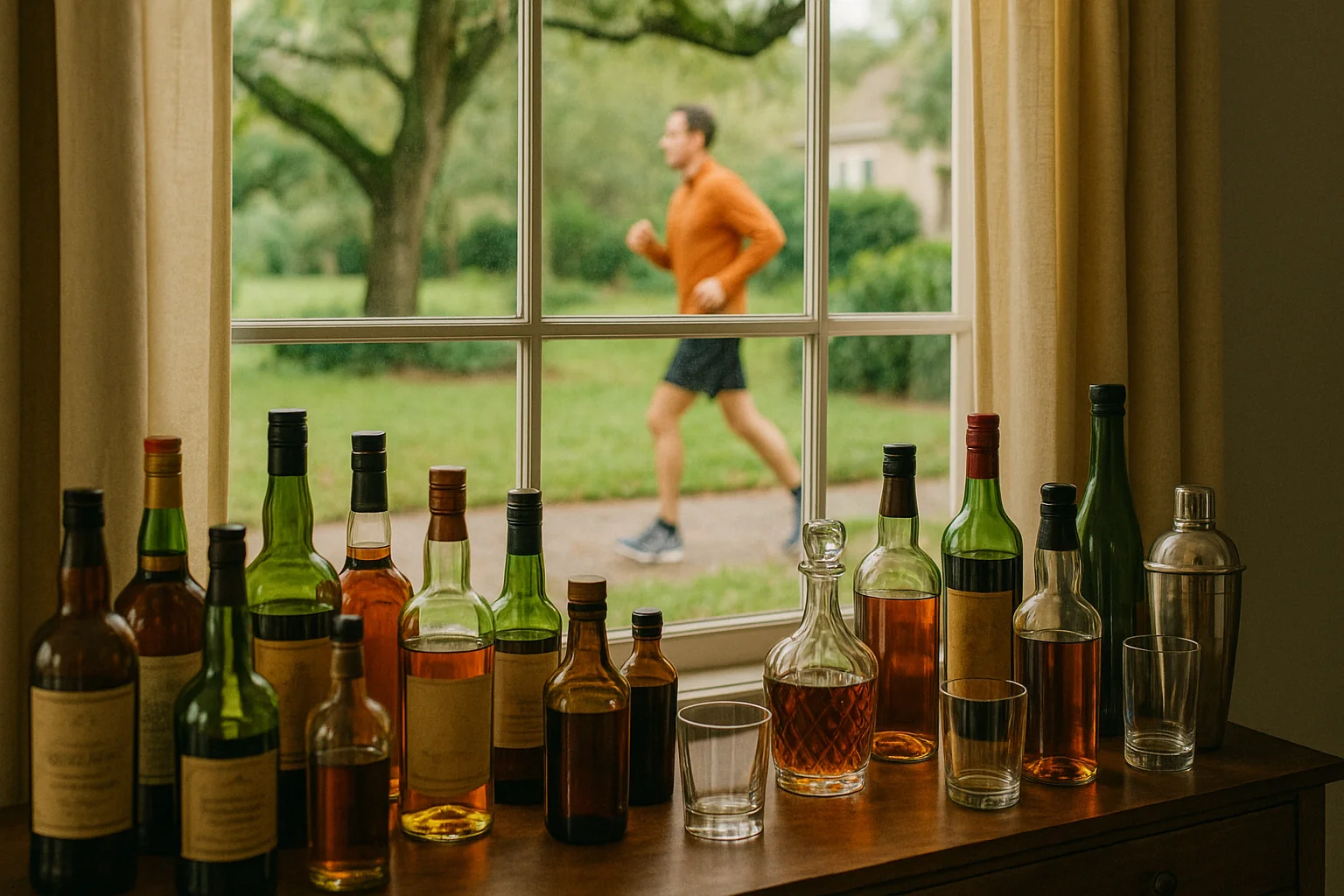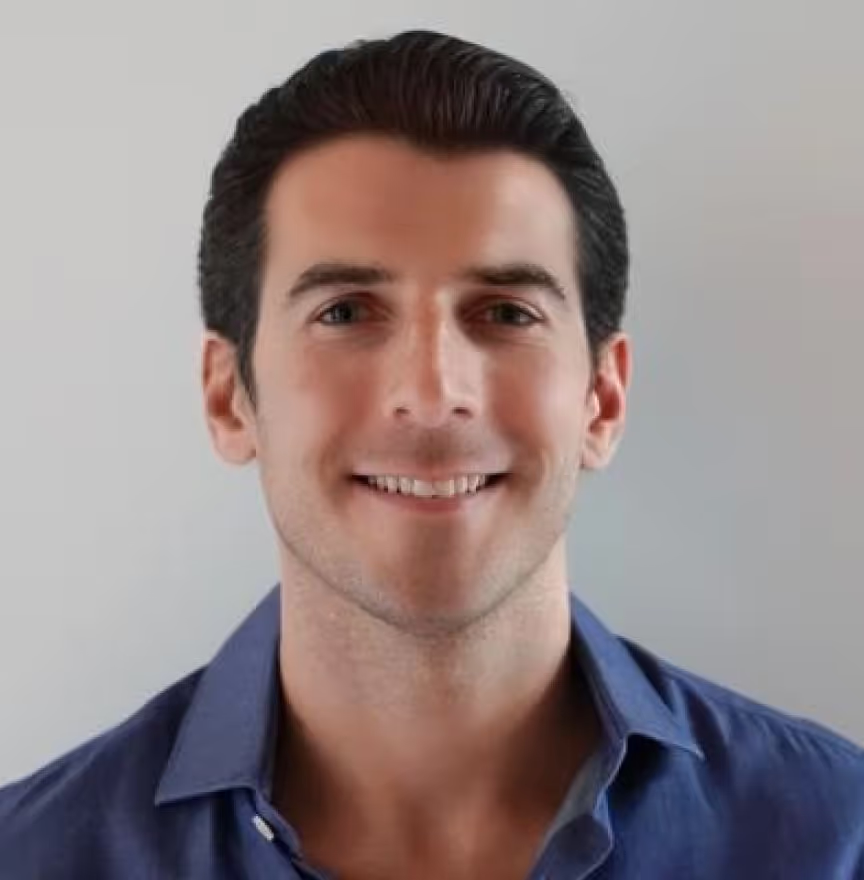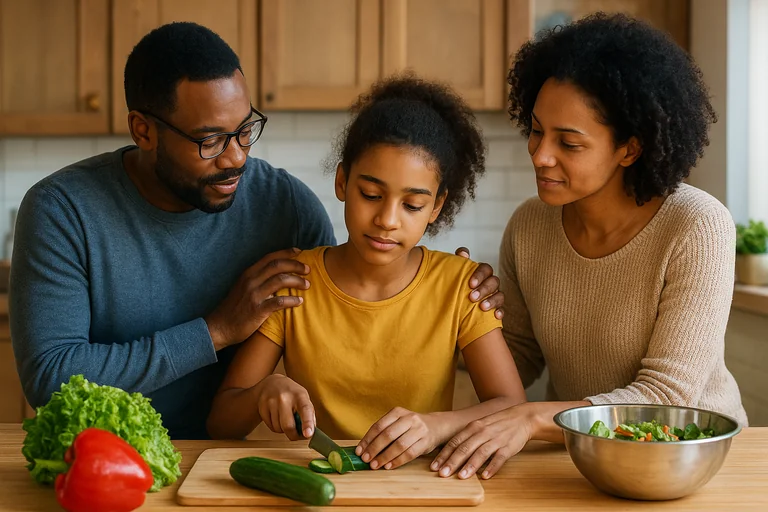A 2 minute assessment to get a personalized mental health or alcohol recovery plan.
The average alcohol craving lasts just 3-5 minutes, and your brain is already beginning to heal from the moment you stop drinking.
What You'll Discover:
- What's happening in your brain during a craving (dopamine, GABA, glutamate)
- Your craving timeline: days 1-7 through one year and beyond
- Medication-assisted treatment: naltrexone and how it blocks cravings
- Immediate strategies: what to do in the first 0-5 minutes when a craving hits
- The HALT framework for checking your foundation
- When to escalate and seek professional help
The first thing to know is this: if you're feeling that sudden, overwhelming urge to drink - whether it hits during a stressful workday, at a social gathering, or in the quiet evening hours when you're alone with your thoughts - you're experiencing a predictable neurochemical event, not a character flaw.
All that said, the average alcohol craving lasts just 3-5 minutes, and your brain is already beginning to heal from the moment you stop drinking. Understanding how to resist alcohol cravings is about working with your brain's natural healing process and using strategies backed by solid scientific research.
Understanding What's Really Happening in Your Brain
When you experience an alcohol craving, you're not experiencing a lack of willpower. You're experiencing a predictable neurochemical event that happens because alcohol has temporarily changed how your brain works.
Dopamine: The Reward Chemical
Alcohol floods your brain with dopamine - your brain's reward chemical - which makes drinking feel pleasurable. Over time, your brain adapts by producing less dopamine naturally and becomes less sensitive to it. This is why people often need more alcohol to feel the same effects.
GABA: The Relaxation System
Alcohol enhances GABA, a brain chemical that promotes relaxation and calm. With regular heavy drinking, your brain compensates by reducing GABA activity. When you stop drinking, your brain is left in a hyperexcitable state, leading to anxiety, restlessness, and intense cravings.
Glutamate: The Excitatory System
Alcohol suppresses glutamate, your brain's main excitatory chemical. Your brain responds by increasing glutamate production. When alcohol is removed, this excess glutamate causes the jitters, tremors, and overwhelming urges to drink that characterize withdrawal.
According to the National Institute on Alcohol Abuse and Alcoholism, these neurochemical changes create a three-stage cycle: the binge/intoxication stage (driven by reward circuits), the withdrawal/negative affect stage (driven by stress systems), and the preoccupation/anticipation stage (where impulse control becomes impaired).
The crucial insight here: these changes are temporary. Your brain has a remarkable ability to heal itself, a process scientists call neuroplasticity. Research shows that significant brain recovery begins within just two weeks of stopping drinking and continues for up to two years.
What to Expect: Your Craving Timeline
One of the most common questions people ask is: "How long will I have to deal with these cravings?" Here's the honest, evidence-based answer.
Days 1-7: The Storm
Cravings typically begin around day 3 after your last drink and peak at days 5-7. This coincides with acute physical withdrawal symptoms.
During this week, cravings can be frequent and intense. Physical withdrawal symptoms generally peak at 48-72 hours and resolve within 7-10 days for most people.
Weeks 2-4: The Intensification
Many people are surprised that cravings often become more frequent in the second week. This is completely normal.
While physical withdrawal is resolving, psychological cravings intensify as your brain adjusts to functioning without alcohol.
Month 2-3: The Turning Point
After the first month, most people notice cravings becoming less frequent and less severe. They become more predictable and easier to track.
Your brain is now showing measurable improvements: better sleep, reduced anxiety, improved mood, and noticeably better concentration.
Months 3-6: Major Healing
This period represents substantial brain recovery. Studies tracking brain scans show significant increases in gray matter volume and cortical thickness during this window.
Your memory, learning abilities, and emotional stability improve dramatically.
One Year and Beyond
After a year of sobriety, most people feel confident using their coping tools. Research indicates that cravings often taper off significantly after the first two years of recovery, though some people may experience occasional cravings even longer - especially during high-stress periods.
So, how long do cravings last? About 60% of people with alcohol use disorder experience a return to heavy drinking within the first six months after treatment, making this the highest-risk period. However, the relapse risk drops dramatically after that: 21.4% in the second year, 9.6% in years 3-5, and just 7.2% after five years.
Here's the encouraging part: approximately one-third of people who receive treatment for alcohol use disorder have no symptoms after one year, and 75% of people with substance use issues ultimately achieve successful long-term recovery.
Medication-Assisted Treatment: The Foundation
If you're serious about managing alcohol cravings, understanding medication options is crucial. These aren't crutches - they're evidence-based tools that address the neurochemical imbalances causing your cravings.
Naltrexone: The First-Line Medication
Naltrexone is often the first-line medication recommended. It works by blocking opioid receptors in your brain, which prevents alcohol from triggering dopamine release in your reward center. Essentially, it blocks the pleasurable effects of drinking.
A recent clinical study published in the National Institutes of Health found that 72% of patients who stayed on naltrexone reported significantly reduced cravings, with about a 50% reduction in alcohol use after just one month.
The research is compelling: a meta-analysis of 50 randomized controlled trials involving nearly 8,000 patients showed that naltrexone reduced the risk of heavy drinking by 83% compared to placebo. It's typically taken as a 50mg daily pill or a monthly injection.
Combining Medication with Therapy
The gold standard approach? Combining medication with therapy. The landmark COMBINE study found that naltrexone plus medical management achieved over 80% abstinent days, demonstrating that medication doesn't require intensive behavioral therapy to be effective - though adding therapy certainly helps.
Immediate Strategies: What to Do When a Craving Hits
Understanding the neuroscience is valuable, but what do you actually do when a craving strikes? Here's a time-based framework.
0-5 Minutes: Emergency Response
The moment you feel a craving coming on, take immediate action to break the automatic response pattern:
Change your physical location immediately - If you're inside, go outside. If you're at home, leave the house and take a walk. Physical movement interrupts the craving pattern.
Engage intense sensory experiences - Hold ice cubes in your hands, take a cold shower, splash cold water on your face, or eat something with a powerful flavor like sour candy or peppermint. Strong sensations can interrupt the craving signal.
Use the 5-4-3-2-1 grounding technique - Name 5 things you see, 4 things you can touch, 3 things you hear, 2 things you smell, and 1 thing you taste. This anchors you in the present moment rather than in the craving.
5-20 Minutes: Active Engagement
Since most cravings peak and subside within this timeframe, sustained engagement is key.
Practice urge surfing, a technique developed by addiction researcher Dr. Alan Marlatt. Here's how: Sit or lie comfortably and close your eyes. Notice where in your body you feel the craving - tightness in your chest, tension in your shoulders, restlessness in your legs.
Observe these sensations without trying to make them go away. Imagine the urge as a wave in the ocean - it rises, peaks, and naturally falls. Focus on your breath and remind yourself that this sensation will pass on its own.
Research on mindfulness-based interventions shows that these approaches produce medium-to-large effects for craving reduction.
Other effective 5-20 minute strategies:
- Vigorous physical activity (jumping jacks, push-ups, a brisk walk)
- Deep breathing exercises like the 4-7-8 technique (inhale for 4 counts, hold for 7, exhale for 8)
- Calling a support person from your pre-programmed list
- Engaging in an absorbing activity (reading, watching something engaging, playing a game)
20+ Minutes: Deeper Engagement
If a craving persists beyond 20 minutes, escalate to more immersive strategies:
Practice "playing the tape through" - mentally walk through what actually happens if you drink: the first drink leads to more drinks, leads to a hangover, leads to shame and regret, leads to damaged relationships, leads to setbacks in your recovery goals. This cognitive exercise can defuse the romanticized urge.
Journal about the craving: its intensity (on a 1-10 scale), what triggered it, what strategies you tried, and how long it lasted. This transforms the craving into data rather than something that controls you.
The HALT Framework: Check Your Foundation
Before assuming a craving represents true alcohol desire, check your basic needs using the HALT acronym:
Hungry - Low blood sugar can intensify cravings dramatically. Eat a protein-rich snack.
Angry - Unprocessed anger is a major craving trigger. Use anger management techniques or physical activity to discharge the emotion.
Lonely - Isolation increases vulnerability to cravings. Reach out to someone - even a brief text exchange can help.
Tired - Sleep deprivation amplifies cravings significantly. Sometimes what feels like an alcohol craving is actually your body crying out for rest.
Research shows that addressing these fundamental needs often resolves what initially appears as an alcohol craving. According to the National Institute on Alcohol Abuse and Alcoholism's craving management guide, recognizing these underlying states is a critical first step in effective craving management.
Cognitive Behavioral Strategies: Changing Your Thinking
Your thoughts about cravings influence how powerful they become. Here are evidence-based reframing techniques.
Replace "I need a drink" with "I'm experiencing a temporary neurochemical fluctuation that will pass in 3-5 minutes."
Replace "I can't handle this" with "I've successfully resisted cravings before, and each time I do, the next one becomes easier."
Replace "Just one drink won't hurt" with "There's no such thing as 'just one drink' for me."
A meta-analysis of cognitive behavioral therapy studies found significant effectiveness for alcohol use disorders, with benefits sustained at 6-9 months and even 12 months after treatment. The key mechanism? Improving your self-regulatory coping skills and increasing your self-efficacy - your belief that you can successfully manage cravings.
Lifestyle Strategies: Prevention
While acute strategies help you manage cravings when they occur, prevention strategies reduce how often they happen.
Trigger avoidance - Remove all alcohol from your home. Avoid locations strongly associated with drinking, at least in early recovery. Modify your routines to eliminate automatic drinking cues - if you always drank while cooking dinner, play music or podcasts during meal prep instead.
Build your support network - Attend support groups like AA, SMART Recovery, or online recovery communities. Having people who understand what you're going through provides both accountability and encouragement.
Optimize sleep and nutrition - Prioritize 7-9 hours of sleep nightly, maintain stable blood sugar through regular protein-rich meals, and stay hydrated. These basics significantly impact craving intensity.
Exercise timing - Physical activity reduces cravings. A 2021 study found that acute aerobic exercise significantly reduced alcohol cravings in adults with alcohol use disorder. Schedule exercise for your high-risk craving times.
What If It Doesn't Work? Troubleshooting Your Strategy
Here's what most articles won't tell you: sometimes your first-line strategies won't be enough. Here's when to escalate.
If a craving lasts longer than 30 minutes: This isn't typical. It may indicate that you need to add medication to your approach or that you're experiencing Post-Acute Withdrawal Syndrome (PAWS), which can cause protracted symptoms lasting months.
If you're experiencing multiple intense cravings daily: This level of frequency often indicates that behavioral strategies alone aren't sufficient. Consider consulting with a doctor about naltrexone or intensifying your therapy.
If strategies that previously worked stop working: This is normal during recovery. Your brain is constantly changing, and you may need to rotate strategies or add new ones to your toolkit.
When to seek immediate help: If you're having thoughts of self-harm, experiencing severe physical symptoms, finding yourself unable to function, or if cravings are dominating every waking moment, seek professional support immediately. These signs indicate you need more intensive intervention than self-management can provide.
The Path Forward: Building Your Personal Strategy
Managing alcohol cravings successfully means focusing on progress, not perfection. Here's your action plan.
- Start with the foundation: If you're experiencing significant cravings, talk to a healthcare provider about medication options. The evidence for naltrexone is strong, and this medication can make everything else easier.
- Build your immediate response toolkit: Practice urge surfing when you're not experiencing a craving so you know how to do it when one hits. Create your list of emergency contacts. Identify your sensory interrupt strategies.
- Address the basics: Fix your sleep, nutrition, and stress management. These aren't peripheral issues - they're central to craving management.
- Track your patterns: Keep a craving log for at least two weeks. Note the intensity, duration, triggers, and what strategies worked. You'll discover your personal trigger profile and most effective interventions.
- Connect with support: Whether it's professional therapy, support groups, or online communities, recovery is significantly easier when you're not doing it alone.
Remember: your brain is healing. Every craving you successfully resist strengthens the neural pathways that make the next one easier.
The statistics show that while the first six months are challenging, people who make it through that period dramatically reduce their relapse risk. And approximately one-third of people who receive treatment for alcohol use disorder have no symptoms after just one year.
Understanding Your Drinking: Take the First Step
Cravings are your brain's signal that alcohol has affected your neurochemistry. Understanding the extent of your relationship with alcohol is the first step toward effective management.
So, what's the best way forward? Whether you're experiencing occasional strong urges or daily cravings, medication-assisted treatment combined with behavioral strategies can make a dramatic difference.
Research shows that people who address their drinking patterns early - before they escalate - have significantly better outcomes. If you're wondering whether your drinking has crossed into territory that would benefit from medical support, taking a brief clinical assessment can provide clarity.
The assessment considers your drinking patterns, craving frequency, impact on your daily life, and previous attempts to cut back. Based on your responses, you'll receive personalized guidance on whether medication-assisted treatment with naltrexone might be appropriate for your situation.
Many people find that combining naltrexone with the behavioral strategies outlined in this article creates a comprehensive approach that addresses both the neurochemical and psychological aspects of cravings.
Taking this step isn't admitting defeat - it's choosing a scientifically-supported path that gives your brain the chemical support it needs while you build psychological coping skills. The earlier you address concerning drinking patterns, the easier recovery becomes and the less damage alcohol causes to your health, relationships, and life goals.
Ready to understand where you are on your journey? Take the alcohol use assessment to see whether medication-assisted treatment could help you manage cravings more effectively.
It takes just a few minutes and provides personalized recommendations based on current clinical guidelines. Thousands of people have found that understanding their options - including naltrexone therapy - gave them the tools they needed to break free from cravings and build the life they want.
You don't have to white-knuckle your way through intense cravings alone. With the right combination of medication, behavioral strategies, and support, managing alcohol cravings becomes progressively easier, not harder.
Your brain is already beginning to heal - give it the support it needs to succeed.
References
- NIAAA: Neuroscience of Brain Addiction and Recovery
- PMC: Naltrexone Clinical Study - Reduced Cravings
- BMC Neuroscience: Mindfulness-Based Interventions for Craving Reduction
- NIAAA: How to Stop Alcohol Cravings
- PMC: Meta-Analysis of Cognitive Behavioral Therapy for Alcohol Use Disorders
- PubMed: Acute Aerobic Exercise Reduces Alcohol Cravings




